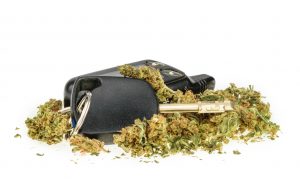 As of January 1, 2020, 11 states and Washington D.C. have legalized recreational marijuana use. That number increases to 33 states when you include medical legalization. Several studies have been conducted to determine what effect this ever-growing legal access to marijuana has had on traffic and DUI/OVI statistics. While more data will be needed to ultimately determine the true effect of legalization, these studies indicate there has been an impact.
As of January 1, 2020, 11 states and Washington D.C. have legalized recreational marijuana use. That number increases to 33 states when you include medical legalization. Several studies have been conducted to determine what effect this ever-growing legal access to marijuana has had on traffic and DUI/OVI statistics. While more data will be needed to ultimately determine the true effect of legalization, these studies indicate there has been an impact.
OVI/DUI Arrest Trends
The United States has seen a general trend of decreasing drunk driving incidents over the last decade. However, while the number of alcohol related DUI/OVI arrest have fallen, the overall rate of impaired driving arrests has remained steady. This is due to an increase in drugged driving arrests. The National Highway Traffic Safety Administration (NHTSA) reports that the number of weekend nighttime drivers testing positive for THC increased 48% from 2007 to 2013-2014, a number which seems likely to increase further with more states allowing recreational use of marijuana.
The Ohio State Highway Patrol confirms that trend within Ohio. While overall drunk driving arrests has dropped, the number of drugged driving arrests in 2018 increased by almost 1,000 arrests over the prior 5-year average. There is no firm data to indicate how much of this increase in drugged driving arrests is attributable to marijuana versus other illicit substances. However, studies from some of the earliest states to legalize marijuana indicate marijuana use accounts for a significant portion of drugged driving arrests.
Marijuana-Related Traffic Citations
One of the earliest states to legalize recreational marijuana was Colorado. Since that occurred in 2013, the Colorado Division of Criminal Justice reports the overall DUI rate fell 15% in the 4 years following marijuana legalization. However, the report also states that traffic citations involving marijuana in some fashion rose from 12% in 2012 (the year before legalization) to 17% in 2016. Interestingly, that rate fell to 15% in 2017, the most recent year data is available.
It should be noted that the results of all of these studies should be taken with a grain of salt, given the imprecise and problematic nature of THC testing and its correlation with impairment.
What Does this Mean for Ohio Moving Forward?
Ohio legalized the medical use of marijuana in 2016. If the national trend continues, it seems to be a matter of when, not if, recreational use is legalized in Ohio. The impact this has on DUI/OVI arrests will be interesting to observe.
The changing landscape of DUI/OVI law underscores the need for Ohio attorneys to stay up to date on the most recent developments in the area. It also illustrates the importance of hiring DUI attorneys who focus on this ever evolving area of law.
 Columbus OVI/DUI Attorney Blog
Columbus OVI/DUI Attorney Blog

